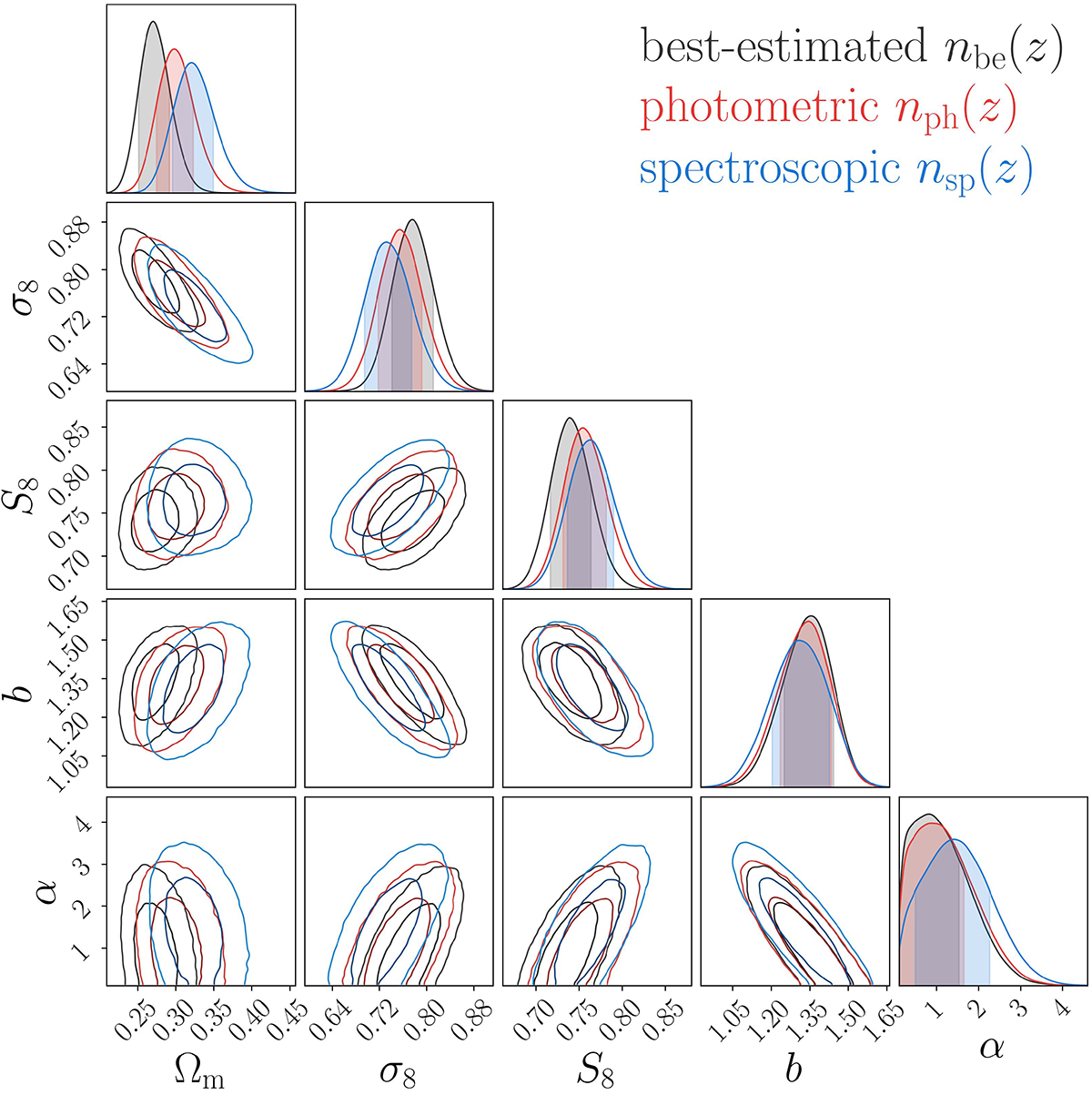Fig. 10.

Download original image
Posteriors of the full DSS vector resulting from using the different lens n(z) shown in Fig. 1. The n(zphot) and n(z) have, by construction, the same mean redshift, while the mean redshift of the spectroscopic redshift estimate is ∼0.015 lower. The main DSS results include a marginalisation over our uncertainty in the mean redshifts of both the lens and source samples, which partially compensates for some of these differences. The posterior obtained using the GAMA spectroscopic n(z), shown in blue, should be taken with caution as it is estimated from a smaller sky coverage and, as such, contains larger statistical fluctuations.
Current usage metrics show cumulative count of Article Views (full-text article views including HTML views, PDF and ePub downloads, according to the available data) and Abstracts Views on Vision4Press platform.
Data correspond to usage on the plateform after 2015. The current usage metrics is available 48-96 hours after online publication and is updated daily on week days.
Initial download of the metrics may take a while.


